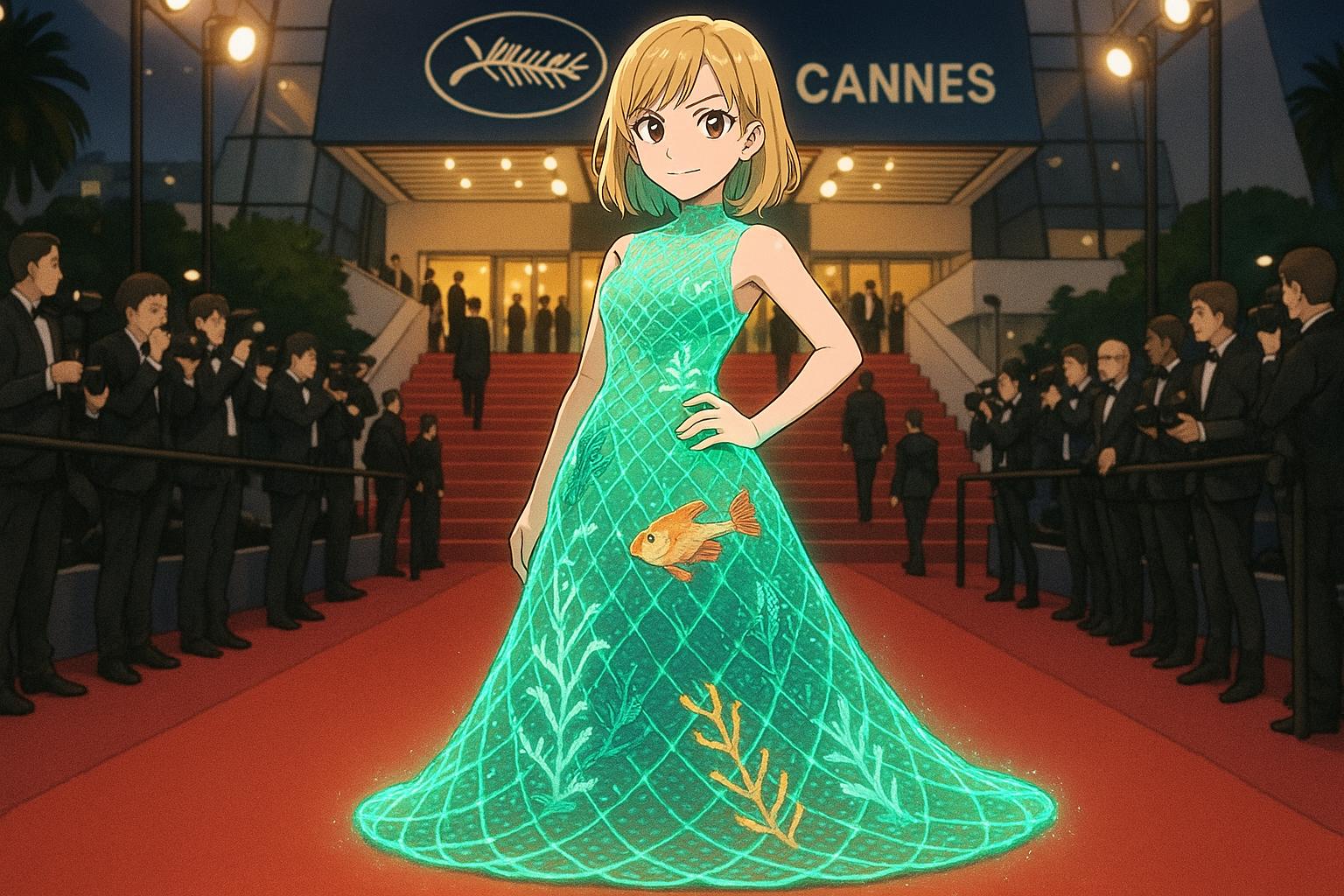The Cannes Film Festival has always served as a dazzling arena for stars to showcase extravagant fashion, but in 2025, British actress and environmental activist Becky Armstrong transformed this landscape entirely. Her red carpet presence was not merely an exhibition of glamour; it was a bold statement about sustainability and conscious luxury. Over the course of the festival, Armstrong astounded onlookers with five strikingly innovative outfits, each one designed to challenge the very norms of high fashion.
Armstrong's journey commenced with her show-stopping gown on the opening night—a breathtaking Balmain creation crafted from recycled fishing nets collected off the coast of Greece. This stunning piece wasn't merely a visual delight; the craftsmanship entailed a staggering 1,400 hours of hand-weaving, emphasising that sustainability could coexist with luxury. Olivier Rousteing, the creative director of Balmain, explained, “We wanted to prove sustainability doesn’t mean sacrificing luxury.” Furthermore, the gown’s train, embroidered with endangered Mediterranean marine life and dyed using algae-based pigments, served to deliver an important message about ecological conservation. Armstrong revealed the gown's afterlife, stating it would be repurposed into 200 limited-edition scarves, with proceeds aiding coastal cleanups. Fashion critic Suzy Menkes aptly remarked that this gown was not just a dress but “a Trojan horse smuggling environmental activism into mainstream glamour.”
Her second appearance paid homage to the history of fashion with a vintage twist. Armstrong resurrected a 1947 Dior "New Look" gown, breathing new life into a piece often overshadowed by modernity. After extensive restoration, which took three months, bioengineers at Imperial College London crafted lab-grown rubies to replace missing ornaments, symbolising the intersection of old-world style and contemporary innovation. Even the cape of the dress was noteworthy; crafted from plant-based cellulose, it was designed to dissolve in water after the event, achieving both aesthetic and environmental goals. “This is how we honour fashion history without plundering the future,” Armstrong stated in conversation with Vogue, illustrating her commitment to sustainable fashion. This sustainability-driven approach sparked curiosity, leading to a 300% increase in searches for "vintage Dior" on luxury resale platforms like Vestiaire Collective, an effect that is now being referred to as “the Armstrong Effect.”
Perhaps the most audacious of Armstrong’s outfits was the "living dress," designed by Dutch artist Diana Scherer. This innovative piece featured a base of hemp embedded with 8,000 wildflower seeds, which not only redefined the concept of fabric but also aimed to foster biodiversity. As Armstrong walked, bees from nearby hives naturally gravitated towards her attire, initiating germination. After the event, the dress was planted in a local community garden, ensuring it would bloom into a vibrant floral display. Armstrong expressed her vision succinctly: “Most red carpet dresses end up in landfills. Mine will become a meadow.” The imagery of nature reclaiming fashion captured the public's imagination, amassing a staggering 12 million views on TikTok within just 24 hours.
The ambitious vision of these looks was backed by rigorous scientific innovation. Her stylist, Lotta Volkova, teamed up with MIT’s Self-Assembly Lab to create temperature-responsive pleats for the gowns, enabling comfort amidst the Riviera heat. Armstrong’s radiant, “zero-makeup” glow was achieved using a custom algae-based serum that photosynthesized under camera flashes, significantly reducing the need for touch-ups throughout the event. Innovative touches extended to her jewellery, which included a choker with lab-grown diamonds that were charged using solar energy in her hotel room. Volkova remarked, “We treated every element as an opportunity to innovate.” The influence of this sustainable approach extended further; L’Oréal Paris noted a 40% increase in searches for “clean red carpet makeup” following Armstrong's impactful appearances.
Not only did Armstrong's outfits defy the typical high-cost couture norms—surprisingly costing 20-30% less than typical red carpet gowns—but they also aligned with a growing movement within the industry. Other celebrities, like Emma Watson and Cate Blanchett, have begun to adopt similar pledges for sustainable fashion, coining the term “The Armstrong Standard” in recognition of her pioneering efforts in this green revolution.
As the Cannes Film Festival evolved to embrace a broader cultural consciousness, initiatives like the Cannes Sustainable Fashion Week emerged to highlight the fusion of luxury and environmental ethics. Founded by Priscila Guedes, this platform exemplifies a global shift toward conscious fashion, asserting that beauty without responsibility is no longer a viable option. During this year's festival, various events—including the 'Sustainability in Fashion Awards Gala'—focused on what it means to celebrate fashion with purpose, further solidifying the conversation started by Armstrong.
In a world increasingly aware of the environmental impact of its choices, Becky Armstrong's transformative appearance at the 2025 Cannes Film Festival challenges the status quo. Through her innovative ensembles and commitment to sustainability, she not only captured the essence of modern glamour but also sparked a broader conversation about the direction of fashion in an age of ecological urgency.
Reference Map
- Lead article on Becky Armstrong's red carpet moments at Cannes 2025.
- Overview of Cannes Sustainable Fashion Week.
- Details about Armstrong’s previous appearances and fashion evolution.
- Additional context about Armstrong's fashion choices and their impact.
- Mention of sustainability-focused events coinciding with Cannes.
Source: Noah Wire Services
